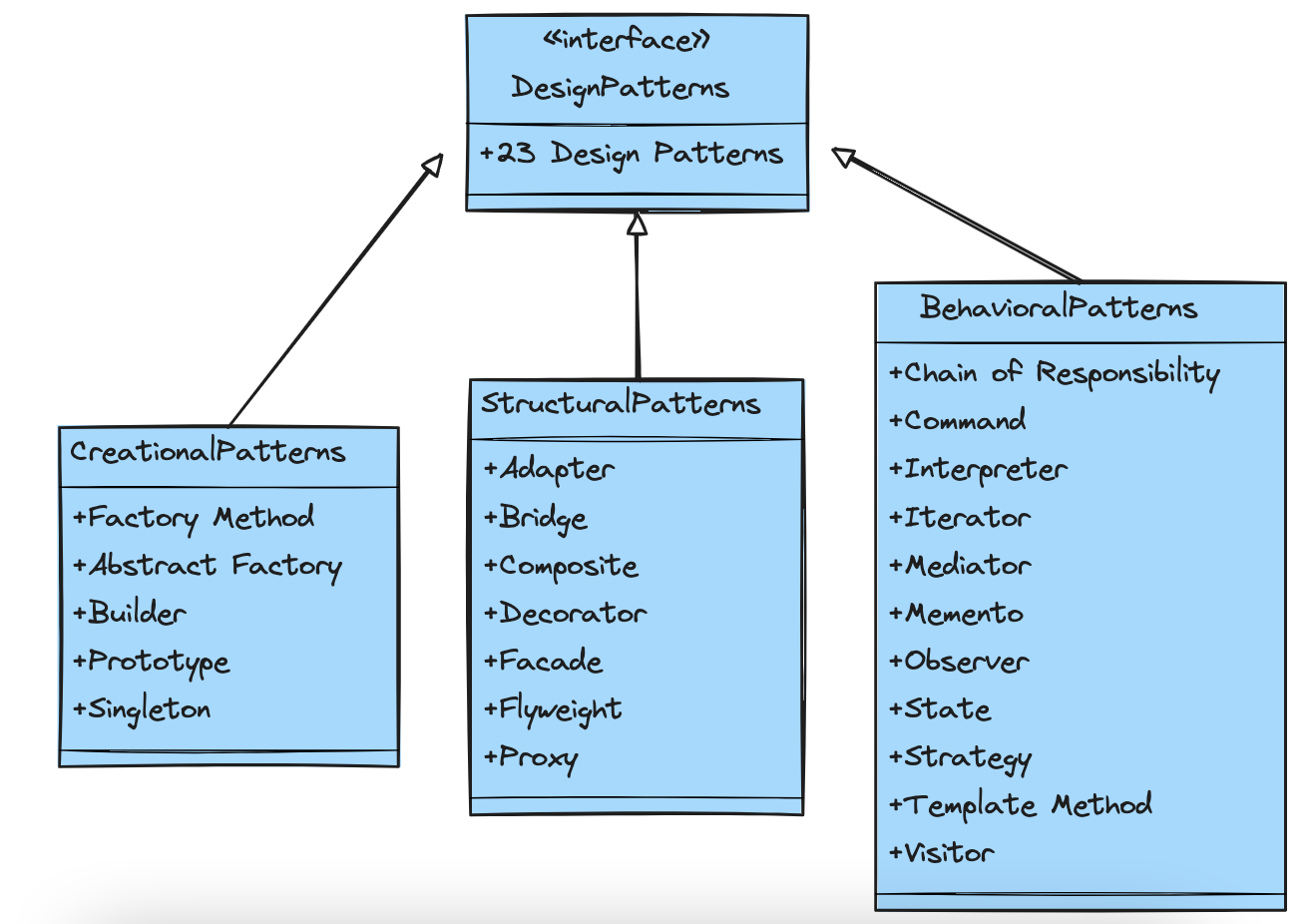行为型设计模式-策略模式
行为型设计模式-策略模式
行为型设计模式-策略模式模式示例记录
1. 背景
通过示例(C++)加强对设计模式的体感。
2. 23种设计模式简要说明
这里说明策略模式
3. 策略模式(Strategy Pattern)
策略模式(Strategy Pattern)是一种行为设计模式,它使你能够定义一系列算法,并将每一个算法封装起来,使它们可以互相替换。策略模式使得算法可以独立于使用它的客户端变化。
策略模式包含以下三个主要角色:
策略接口(Strategy):定义了一个算法的接口,所有的具体策略类都需要实现这个接口。这样,客户端就可以通过策略接口来调用不同的策略算法。
具体策略(Concrete Strategy):实现了策略接口,封装了具体的算法逻辑。客户端可以通过策略接口来调用这些具体的算法。
上下文(Context):也被称为策略使用者,它持有一个策略接口的引用,用于调用具体的策略算法。上下文通常使用策略接口来配置其所需的行为。
1
2
3
4
5
6
7
8
9
10
11
12
13
14
15
16
17
18
19
20
21
22
23
24
25
26
27
28
29
30
31
32
33
34
35
36
37
38
39
40
41
42
43
44
45
46
47
48
49
50
51
52
53
54
55
56
57
58
59
60
61
62
63
#include <iostream>
#include <string>
#include <memory>
// 策略接口(抽象类)
class RenderingStrategy {
public:
virtual ~RenderingStrategy() = default;
virtual std::string render(const std::string& data) const = 0;
};
// 具体策略:ProductRenderingStrategy
class ProductRenderingStrategy : public RenderingStrategy {
public:
std::string render(const std::string& data) const override {
return "<table><tr><td>" + data + "</td></tr></table>";
}
};
// 具体策略:UserRenderingStrategy
class UserRenderingStrategy : public RenderingStrategy {
public:
std::string render(const std::string& data) const override {
return "{\"user\":\"" + data + "\"}";
}
};
// 上下文类(Context)
class RenderingContext {
private:
std::unique_ptr<RenderingStrategy> strategy;
public:
// 构造函数接收一个std::unique_ptr<RenderingStrategy>
RenderingContext(std::unique_ptr<RenderingStrategy> s) : strategy(std::move(s)) {}
std::string renderData(const std::string& data) {
return strategy->render(data);
}
// 可以通过成员函数来改变策略,但需要传入新的std::unique_ptr<RenderingStrategy>
void setStrategy(std::unique_ptr<RenderingStrategy> s) {
strategy = std::move(s);
}
};
int main() {
// 使用std::make_unique创建具体策略对象的unique_ptr
auto productStrategy = std::make_unique<ProductRenderingStrategy>();
auto userStrategy = std::make_unique<UserRenderingStrategy>();
// 创建上下文对象,并传入unique_ptr
RenderingContext context(std::move(productStrategy));
std::string productHtml = context.renderData("Product A");
std::cout << "Product Rendered: " << productHtml << std::endl;
// 改变策略并重新渲染
context.setStrategy(std::move(userStrategy));
std::string userJson = context.renderData("User123");
std::cout << "User Rendered: " << userJson << std::endl;
return 0;
}
g++ strategy.cpp -std=c++14 -o strategy (std::make_unique在C++14中才支持)
1
2
3
4
5
6
7
8
9
10
11
12
13
14
15
16
17
18
19
20
21
22
23
24
25
26
27
28
29
30
31
32
33
34
35
36
37
38
39
40
41
42
43
44
45
46
47
48
49
50
51
52
53
54
55
56
57
58
59
60
61
62
63
64
65
66
#include <iostream>
#include <string>
#include <memory>
// 策略接口(抽象类)
class RenderingStrategy {
public:
virtual ~RenderingStrategy() = default;
virtual std::string render(const std::string& data) const = 0;
};
// 具体策略:ProductRenderingStrategy
class ProductRenderingStrategy : public RenderingStrategy {
public:
std::string render(const std::string& data) const override {
return "<table><tr><td>" + data + "</td></tr></table>";
}
};
// 具体策略:UserRenderingStrategy
class UserRenderingStrategy : public RenderingStrategy {
public:
std::string render(const std::string& data) const override {
return "{\"user\":\"" + data + "\"}";
}
};
// 上下文类(Context)
class RenderingContext {
private:
std::unique_ptr<RenderingStrategy> strategy;
public:
// 构造函数接收一个裸指针,并用 std::unique_ptr 管理它
RenderingContext(RenderingStrategy* s) : strategy(s) {}
// 更安全的构造函数,使用 std::unique_ptr 管理 new 分配的对象
explicit RenderingContext(std::unique_ptr<RenderingStrategy> s) : strategy(std::move(s)) {}
std::string renderData(const std::string& data) {
return strategy->render(data);
}
// 可以通过成员函数来改变策略
void setStrategy(std::unique_ptr<RenderingStrategy> s) {
strategy = std::move(s);
}
};
int main() {
// 使用 new 运算符创建具体策略对象,并用 std::unique_ptr 管理
std::unique_ptr<RenderingStrategy> productStrategy(new ProductRenderingStrategy());
std::unique_ptr<RenderingStrategy> userStrategy(new UserRenderingStrategy());
// 创建上下文对象,并传入 std::unique_ptr
RenderingContext context(std::move(productStrategy));
std::string productHtml = context.renderData("Product A");
std::cout << "Product Rendered: " << productHtml << std::endl;
// 改变策略并重新渲染
context.setStrategy(std::move(userStrategy));
std::string userJson = context.renderData("User123");
std::cout << "User Rendered: " << userJson << std::endl;
return 0;
}
g++ strategy.cpp -std=c++11 -o strategy
4. 小结
1、通过示例介绍了策略模式
5. 参考
1、GPT
This post is licensed under CC BY 4.0 by the author.
